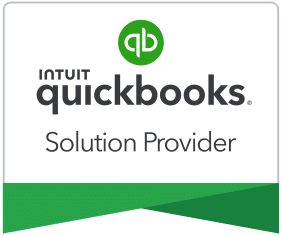Learn how these 14 tax reform changes could impact your real estate after Trump signed the new tax reform bill into law on December 22, 2017.
The highly debated Tax Cuts and Jobs Act, officially, took effect on January 1, 2018. The tax reform aimed to streamline the US tax code, reducing corporate tax rates, and providing relief for small business and individuals. Most of the reforms that are going into effect will begin sunsetting in as early as 2023.
The most significant changes
The table below highlights the most significant changes between the tax filing season of 2017 and 2018.
| Category | 2017 | 2018 | Commentary |
|---|---|---|---|
| Tax Brackets & Rates –(Married filing jointly) | $0-$18,650 – 10% $18,650 to $75,900 – 15% $75,900 to $153,100 – 25% $153,100 to $233,350 – 28% $233,350-$416,700 – 33% $416,700-$470,700 – 35% Above $470,700 – 39.6% | $0-$19,051 – 10% $19,051 to $77,400 – 12% $77,400 to $165,000 – 22% $165,000 to $315,000 – 24% $315,000-$400,000 – 32% $400,000-$600,000 – 35% Above $600,000 – 37% | Not only the tax rate decreased across the broad, but the tax bracket size also increased. The only exception is the taxpayer currently in the 35% bracket. |
| Standard Deduction | The standard deduction for married couple filing jointly is $12,700 | The standard deduction doubled to $24,000 for married couple filing jointly | By doubling the standard deduction, the itemized deduction will be less attractive for many taxpayers. |
| Personal Exemption | $4,050 per person | None | The net effect of increasing the standard deduction and eliminating the personal exemption can only be calculated at personal level to see if there is a positive or negative impact your taxes. |
| Property Tax and State & Local Income Taxes | Unlimited | Maximum deduction of $10,000 | The $10,000 limit is the sum of total state income, local taxes and property taxes. The most negatively impacted individuals by this provision are those who reside in high tax states and high property tax regions. |
| Mortgage Interest | $1 Million | $750,000 | This provision also impacts high property value areas such asCalifornia, New York, DC, etc. |
| Child Tax Credit | $1,000 per child (phase out for high earners) | $2,000 per child (phase out for high earners) | The child tax credit was the key provision for selling tax reform to middle to lower income families. |
| 401(k) Retirement Plan | Maximum contribution per individual $18,000 | Maximum contribution per individual $18,500 | No change for 401(k) plan except inflation adjustment. |
| Estate and Death Tax | Exemption $5.49 Million | Exemption $10 Million | Double the exemption. This means an individual can leave $4.5 million more to their heirs in 2018, and pay no federal estate tax. |
| Corporate Taxes | 35% | 21% | This is the largest American corporate tax cut since the modern corporate tax began more than a century ago. The effect of the rate cut is remains to be seen. |
| Small Business Taxes | Based on individual tax rate for the pass-through entities (LLC, Partnership and S-corporation) | 20% business income deduction for the first $315,000 in income earned by pass-through entities. The first $75,000 of pass-through income would be subject to an 8% tax rate | This provision was enacted to help small businesses compete with large corporations who are also benefiting from the corporate tax rate reduction. This provision reduces small business tax burden. |
| Capital Gains – Long Term | 0%, 15%, and 20% | 0%, 15%, and 20% | No change to the capital gains tax rate. |
| Social Security Income | No Change | No Change | No change of the tax treatment of social security income. |
| Bonus Depreciation | Accelerated depreciation where you can deduct 50% of the depreciation in the year the it was put into service | 100% depreciation deduction for qualifying improvements that have a useful life of less than 20 years in the year put into service | This change is retroactive to September 17, 2017. Begins phasing out after January 1, 2023. |
| Obamacare Penalty | Individual mandate penalty for no health insurance | No individual mandate penalty starting in 2019. | The individual mandate penalty will still be in effect in 2018. |
While not exhaustive, this list provides an overview of the most impactful tax reform changes to pay close attention to. Continue to work with your local accountant who is familiar with your particular situation so you can best take advantage of all existing tax laws.
In Closing
In many ways, real estate investors came out ahead with the passage of the Tax Cuts and Jobs Act. Despite the significant conversation around the 1031 Exchange, the 1031 Exchange remained intact for real estate transactions. Plus, the bonus depreciation and the pass-through deduction will positively impact investors.
As many have reported, this law was passed very quickly and as a result, a number of flaws have shown up, and new loopholes were created. The conversation will continue and will likely be a larger topic in the upcoming election cycles.







